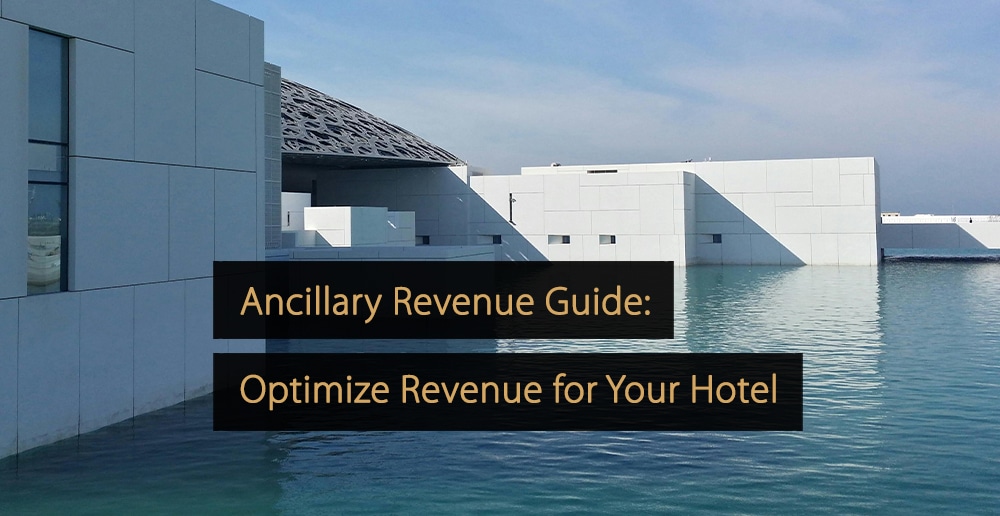One of the best and most common definitions of Revenue Management is “Selling the Right Room to the Right Client at the Right Moment at the Right Price in the Right Distribution Channel with the best commission efficiency”. Both Revenue Management and Conversion Rate Optimization (CRO) are data-driven, but they are slightly different. In this article, you can learn about the myths of CRO, how it relates to Revenue Management and how best to combine them to improve your business.
Revenue Management Analysis
Revenue Management isn’t only about changing rates, opening and closing room availability and restrictions, but a deep and structured analysis of demand, based on historical data and forecasting. It’s an approach that applies mathematical models and algorithms to large volumes of data collected. Revenue managers are in charge of pricing, packages, offers, and campaigns. They provide insights for marketing, digital, and sales decisions.
Conversion Rate Optimization
Website Conversion Rate Optimization (CRO) is also a data-driven approach. It is far from being simple. Just as with revenue management, it is a multi-factorial, math-based, data-intense process somewhere between being a science and an art. Yet, a lot of revenue managers still don’t see how they can make use of it and why they should include it into their arsenal.
5 Myths about CRO
First, let’s take a look at the most popular myths about Conversion Optimization:
1. CRO is just website design
Strong website design and great user experience can certainly make your website more appealing to users. Yet, on their own, they’re unlikely to improve your conversions. Conversion Optimization is the systematic process of analyzing which online experiences drive direct bookings so that you can emphasize those and downplay or eliminate ones that don’t work.
2. CRO is “advanced” SEO
Search Engine Optimization (SEO) helps to drive traffic. But not all traffic has the same quality and converts at the same level. Conversion Optimization is about getting more direct bookings from existing traffic. To increase sales, you can work on CRO without investing in SEO. Although these areas do intersect sometimes. Higher website upload speed is useful for both: faster response leads to a higher ranking on booking search engines (SEO), and guest website usage satisfaction results in more bookings (CRO).
3. CRO is a one-fits-all technique
Following ‘best practices’ isn’t enough to boost your conversions. What works for your competitors or other industries might not work for you. CRO isn’t static. In fact, it includes constant testing and understanding of what benefits your business. CRO strategy should therefore be customized to each hotel.
4. CRO is all about the hotel website; it isn’t about the guest.
Without knowing who your guests are and what are they looking for, any improvements made to a website are done blindly. CRO uses your guest experiences and preference to drive online direct bookings.
5. CRO is not the task of a revenue manager
The last one, that summarizes all of the above, is that most revenue managers believe that CRO is a responsibility of the e-commerce manager, or digital marketing manager, or website developer, or SEO specialist, or UX/UI designer – but not themselves! Since some revenue managers have misconceptions about CRO, many of them believe that someone else should be responsible for increasing the conversion rate. In reality, it is important to understand that CRO isn’t a single skill, but a combination of Analytics, Design, UX/UI, Copywriting, Marketing, and eCommerce. Some even call this Conversion Marketing. There is one enormous difference from any other forms of eCommerce: in Hospitality, Revenue Management is a cornerstone of the analysis and should be a basis for any marketing activity.
How does Conversion Optimization relate to Revenue Management?
What numbers-driven Revenue managers should like about CRO is that CRO is all about clear metrics and ROIs. On the other hand, when we speak about some marketing concepts, this is not always true.
For example, the brand is important. Everyone agrees with this statement. But how should we calculate the impact marketing spending has on brand awareness, and how it affects NetADR (Average Daily Rate)? It is especially complicated for small and medium-sized properties. Therefore, not all marketing concepts fit the mathematical harmony of Revenue Management. CRO and its KPIs surely do.
CRO has two distinct yet interconnected parts
CRO has two distinct yet interconnected parts within it. Both components are important and much attention should be paid to both of them.
Basic features and website speed
The first part includes basic features that need to be fixed. Basic features, such as website speed and clear CTA: the Book Button, are the foundation for further conversion optimization growth. These are barriers to direct bookings and the first set of obstacles to be removed. Not fixing these most common problems will lead to guests’ abandonment. Optimization during this step is done by website developers and UX/UI designers with insights from the Marketing department. Obviously, this isn’t always enough.
Guest segmentation and targeting
The second type of features convert visitors; motivate them to finalize the booking. Behavior marketing and cognitive biases are used to ease the decision-making process. To create a basis for Website Conversion Optimization, the focus should be on the following: Functionality, Accessibility, Usability, and Intuitivity. The missing element is the following: Website Persuasiveness. The key success factor here is personalization: to convert the right guest, you need to make the right offer at the right time with the right benefits. Sounds familiar, doesn’t it?
In fact, both Revenue Management and advanced Conversion Optimization depend on proper guest segmentation and targeting. Different guest segments have different behavior patterns, different motivations, and require different personalized booking experiences and different factors to convert them.
Successful websites convert better because they create a tailor-made experience throughout the booking funnel for their users. They research their audience and give them something they want.
How to combine Revenue Management and Conversion Optimization?
Once again: Personalization is the foundation for both Revenue Management and Conversion Rate Optimization. Therefore, they can easily be combined.
Conversion Optimization benefits significantly from data provided by revenue managers, since they have valuable insight into customer behavior patterns. With this data, CRO tools can target the right guest with the most interesting offer in the best possible booking window. The easiest example would be: offer an early booking rate for family bookers, who can be converted with a value deal, and don’t offer the same discount for a business traveller, who is less price sensitive.
For revenue managers, the direct channel is always the best channel – it has the lowest associated costs. Direct guests are the best guests since they have higher netADR. With direct communication, there is an opportunity for a hotel to convert them into loyal and recurrent customers and there is an opportunity to upsell.
CRO tools can enhance direct sales strategies to an impressive degree or, even correct the revenue managers’ errors. For example, an OTA undercuts a hotel’s price. Rate Comparison widget with Price matching can fix it. When a lower price is detected on an OTA, the widget automatically offers the guest an adequate discount and sends an OTA disparity alert to the person in charge. Yes, OTAs should never have been given a better rate, but mistakes happen. There are several providers of such CRO tools, for example, 123COMPARE.ME.
When is the right time to focus on Conversion?
Conversion rates are the key to hotel profitability. With OTAs’ commission ranging from 15-25%, it is mandatory for revenue managers to control the most efficient channel and this critical marketing task. In times of crisis, such as the financial crisis or the COVID-19 crisis, OTA sales change. Many guests experienced troubles with cancellations through OTAs and their trust in booking via hotels’ websites will have increased. It provides a much sought and desired flexibility. It isn’t a stretch to predict that the “booking direct” trend will grow, and website effectiveness will require closer attention.
Now is the time to exploit conversion optimization as part of your revenue management strategies. With the proper Conversion Optimization tools, hotels can increase their online sales and significantly change channel mix and total cost of revenue.








Leave A Comment